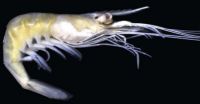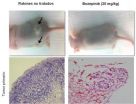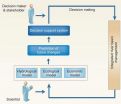Brain researchers pinpoint gateway to human memory
Study in humans tracks information flow within the brain using ultra-precise magnetic resonance imaging
2014-11-26
(Press-News.org) This news release is available in German.
The human brain continuously collects information. However, we have only basic knowledge of how new experiences are converted into lasting memories. Now, an international team led by researchers of the University of Magdeburg and the German Center for Neurodegenerative Diseases (DZNE) has successfully determined the location, where memories are generated with a level of precision never achieved before. The team was able to pinpoint this location down to specific circuits of the human brain. To this end the scientists used a particularly accurate type of magnetic resonance imaging (MRI) technology. The researchers hope that the results and method of their study might be able to assist in acquiring a better understanding of the effects Alzheimer's disease has on the brain. The science journal "Nature Communications" reports on their findings.
For the recall of experiences and facts, various parts of the brain have to work together. Much of this interdependence is still undetermined, however, it is known that memories are stored primarily in the cerebral cortex and that the control center that generates memory content and also retrieves it, is located in the brain's interior. This happens in the hippocampus and in the adjacent entorhinal cortex. "It is been known for quite some time that these areas of the brain participate in the generation of memories. This is where information is collected and processed. Our study has refined our view of this situation," explains Professor Emrah Düzel, site speaker of the DZNE in Magdeburg and director of the Institute of Cognitive Neurology and Dementia Research at the University of Magdeburg. "We have been able to locate the generation of human memories to certain neuronal layers within the hippocampus and the entorhinal cortex. We were able to determine which neuronal layer was active. This revealed if information was directed into the hippocampus or whether it traveled from the hippocampus into the cerebral cortex. Previously used MRI techniques were not precise enough to capture this directional information. Hence, this is the first time we have been able to show where in the brain the doorway to memory is located."
For this study, the scientists examined the brains of persons who had volunteered to participate in a memory test. The researchers used a special type of magnetic resonance imaging technology called "7 Tesla ultra-high field MRI". This enabled them to determine the activity of individual brain regions with unprecedented accuracy.
A Precision method for research on Alzheimer's
"This measuring technique allows us to track the flow of information inside the brain and examine the areas that are involved in the processing of memories in great detail," comments Düzel. "As a result, we hope to gain new insights into how memory impairments arise that are typical for Alzheimer's. Concerning dementia, is the information still intact at the gateway to memory? Do troubles arise later on, when memories are processed? We hope to answer such questions."
INFORMATION:
Original publication
„Laminar activity in the hippocampus and entorhinal cortex related to novelty and episodic encoding", Anne Maass, Hartmut Schütze, Oliver Speck, Andrew Yonelinas, Claus Tempelmann, Hans-Jochen Heinze, David Berron, Arturo Cardenas-Blanco, Kay H. Brodersen, Klaas Enno Stephan, Emrah Düzel, Nature Communications, 2014, doi: 10.1038/ncomms6547
The German Center for Neurodegenerative Diseases (DZNE) investigates the causes of diseases of the nervous system and develops strategies for prevention, treatment and care. It is an institution of the Helmholtz Association of German Research Centres with sites in Berlin, Bonn, Dresden, Göttingen, Magdeburg, Munich, Rostock/Greifswald, Tübingen and Witten. The DZNE cooperates closely with universities, their clinics and other research facilities. END
ELSE PRESS RELEASES FROM THIS DATE:
2014-11-26
The evolution of freshwater shrimps species living in both sides of Central America, isolated by the closure of Isthmus of Panama (3 million years ago) were studied by molecular tools. Despite the small likelihood of species crossing the Isthmus from one side to the other through the channel exist, the genetic isolation of them were maintained over the time and the separation of Pacific and Atlantic sister species still unchanged. Sister species refer to pairs of species that are genetically and morphologically closely related, but reproductively isolated.
The collection ...
2014-11-26
A new paper, by Dr Stanley Blue, lecturer in Social Sciences at The University of Manchester, claims that there needs to be a shift in public health policy, with less focus on efforts to change individual behaviour and more attention on breaking social habits and practices that are blindly leading us into bad health.
Theories of practice and public health: understanding (un)healthy practices is published in the journal, Critical Public Health, and written by Dr Stanley Blue, lecturer at the School of Social Sciences, Prof Elizabeth Shove, of Lancaster University, Prof ...
2014-11-26
CLEVELAND, Ohio (November 26, 2014)--Removing ovaries at hysterectomy does not increase a woman's risk of pelvic organ prolapse after menopause. In fact, removing ovaries lowers the risk of prolapse. This surprising finding from a Women's Health Initiative study was published online this week in Menopause, the journal of The North American Menopause Society (NAMS).
Whether to remove ovaries at hysterectomy for reasons other than cancer is a subject of hot debate. Removing them reduces the risk of breast cancer and dramatically reduces the risk of ovarian cancer. On the ...
2014-11-26
For several years, it has been known that superfluid helium housed in reservoirs located next to each other acts collectively, even when the channels connecting the reservoirs are too narrow and too long to allow for substantial flow. A new theoretical model reveals that the phenomenon of mysterious communication "at a distance" between fluid reservoirs is much more common than previously thought.
Liquids in containers that are at a distance from each other may behave collectively, even if the channels connecting the reservoirs are so narrow and long that they prevent ...
2014-11-26
Enzymes are macromolecular biological catalysists that lead most of chemical reactions in living organisms. The main focus of enzymology lies on enzymes themselves, whereas the role of water motions in mediating the biological reaction is often left aside owing to the complex molecular behavior. The groups of Martina Havenith (Cluster of Excellence RESOLV - Ruhr explores Solvation) and Irit Sagi (Weizmann Institue of Science, Israel) revised the classical enzymatic steady state theory by including long-lasting protein-water coupled motions into models of functional catalysis. ...
2014-11-26
A study reveals how little we know about the Amazonian diversity. Aiming to resolve a scientific debate about the validity of two species of freshwater shrimp described in the first half of the last century, researchers have found that not only this species is valid, but also discovered the existence of a third unknown species. The researchers concluded that these species evolved about 10 million years ago. The study was published in the open access journal ZooKeys.
The great biodiversity in Amazonia is an issue widely studied. However, the real number of species in this ...
2014-11-26
This news release is available in Spanish.
"Let's suppose that we need a system for monitoring vital signs in a home for the elderly; preferably a wireless system. Using the deployed standard, the sensors that will be communicating via Bluetooth are connected to each other. "The elderly individuals in the home are fitted with these sensors which are used to measure their body temperature, heart rate, etc. and to forward the data to the nursing department," pointed out Josu Etxaniz-Marañón. "Time is a critical factor in a network of this type, and ...
2014-11-26
An international team of scientists which includes researchers from the U. of Granada has demonstrated for the first time that it is possible to establish in an objective way the level of fatigue in physicians after long shifts through their eye movement.
This research reveals that the speed of saccadic movement (mostly voluntary rapid eye movements which we use to focus our gaze upon an object that attracts our attention) is an excellent index to measure objectively the level of fatigue in the medical profession.
In an article published in Annals of Surgery (the most ...
2014-11-26
An Andalusian team of researchers led by the University of Granada has demonstrated the efficacy of a new drug against cancerogenic stem cells, which cause the onset and development of cancer, of relapse after chemotherapy and metastasis. This drug, called Bozepinib, has proved to be effective in tests with mice. The results have been published in the prestigious journal Oncotarget.
Cancerogenic stem cells appear in small quantities in tumours, and one of their important features is that they contribute to the formation of metastasis in different places within the original ...
2014-11-26
For tens of thousands of years, modern humans have used the waterways to spread out across the surface of the planet. Major civilizations developed along massive rivers like the Nile in Egypt and the Yellow River in China, and massive water channels propelled the expansion of economies around the world. But in recent decades, according to a team of scientists at the Cold and Arid Regions Environmental and Engineering Research Institute, Chinese Academy of Sciences, in the northwestern Chinese city of Lanzhou, the competition between economic growth and the ecosystem of ...
LAST 30 PRESS RELEASES:
[Press-News.org] Brain researchers pinpoint gateway to human memory
Study in humans tracks information flow within the brain using ultra-precise magnetic resonance imaging




